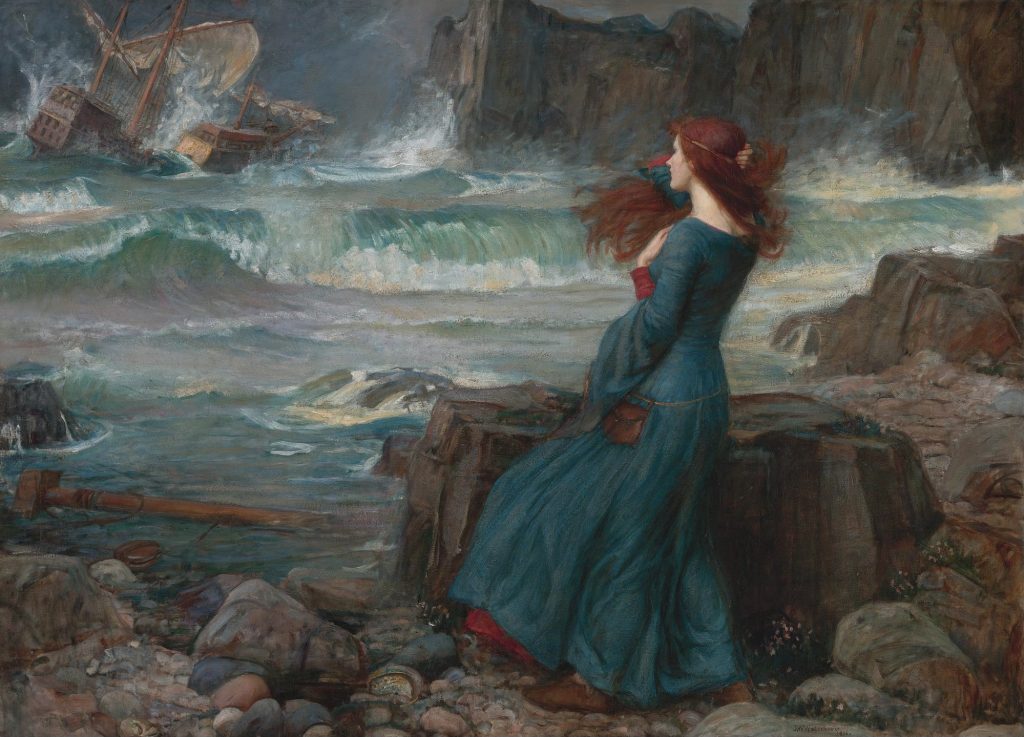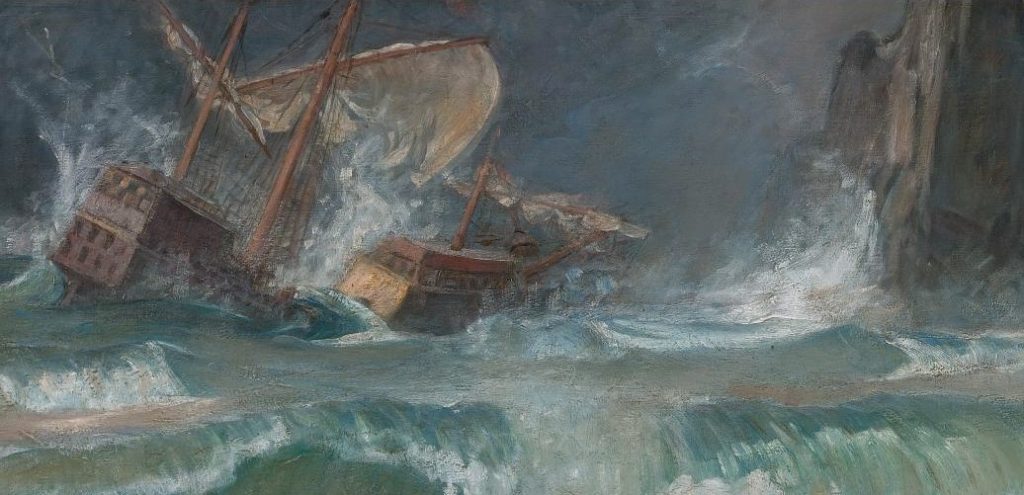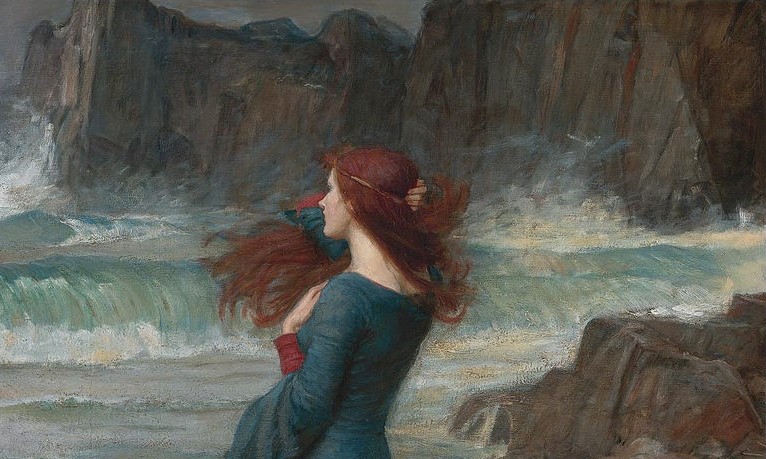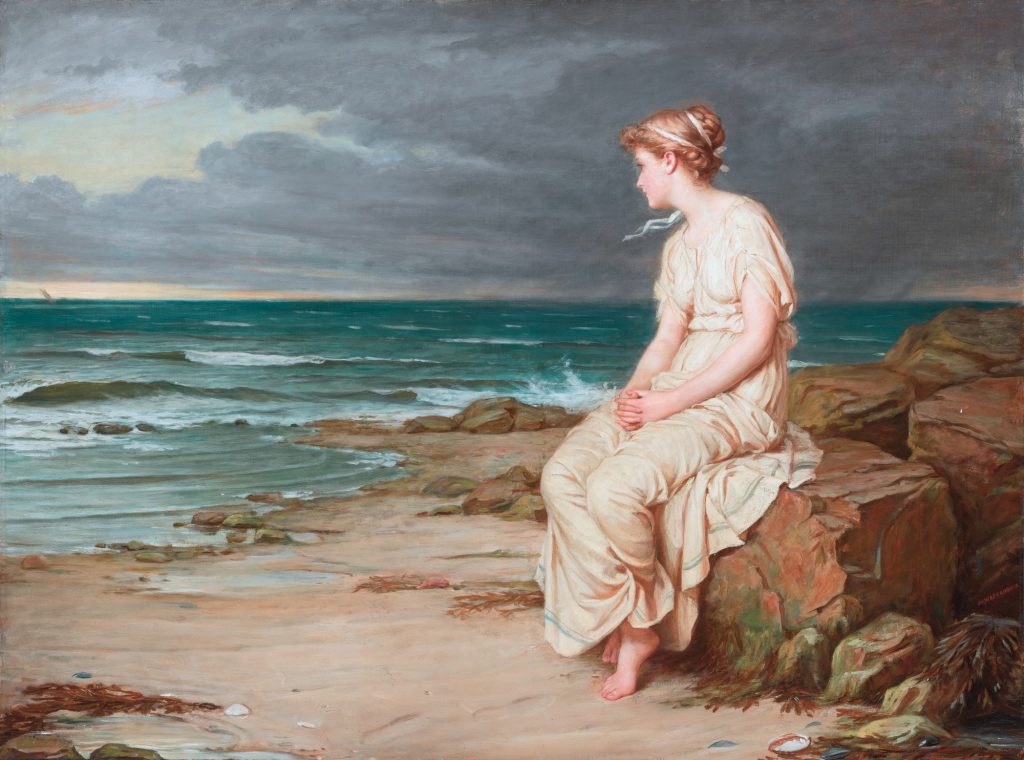Masterpiece Story: L.O.V.E. by Maurizio Cattelan
In the heart of Milan, steps away from the iconic Duomo, Piazza Affari hosts a provocative sculpture by Maurizio Cattelan. Titled...
Lisa Scalone 8 July 2024
The subject of this eerie painting by John William Waterhouse is Miranda, a character from William Shakespeare’s The Tempest. She was detained on an island, together with her father, Prospero, for almost twelve years. This happened as a result of having been exiled from Milan by Prospero’s power-seeking brother, Antonio.
John William Waterhouse (1849–1917) was an English painter who embraced the Pre-Raphaelite Brotherhood’s style and subject matter. Accordingly, many of his artworks were inspired by ancient Greek mythology, Arthurian legends, and literature.

A sense of patriotism nurtured through the poetry of Tennyson and the work of Shakespeare, stimulated many British artists, including Waterhouse. Hence they wanted to refer their work to the classical literature of Britain’s past. This painting, created in 1916 is an example of this, being a representation of The Tempest by William Shakespeare. Significantly, it became one of Waterhouse’s most recognized works and the most popular illustration of the play.
Waterhouse had deserted classical myths as topics in favor of medieval and Renaissance narratives. In particular, he tended to focus on ladies who were experiencing a revelation. In the play, Miranda is the only female character to appear on stage. Despite this, she is depicted throughout the drama with concern and intensity. Waterhouse has chosen the most tragic and dramatic moment of the drama – the shipwreck.








In the painting, we can’t see Miranda’s face, yet we can feel her sorrow. Specifically, she holds her hand to her heart to express the pain and despair she is suffering at the loss of life. At the same time, she declaims:
If by your art, my dearest father, you have
Put the wild waters in this roar, allay them.
The sky, it seems, would pour down stinking pitch,
But that the sea, mounting to th’ welkin’s cheek,
Dashes the fire out. Oh! I have suffered
With those that I saw suffer: a brave vessel,
Who had, no doubt, some noble creatures in her,
Dash’d all to pieces. Oh! The cry did knock
Against my very heart. Poor souls, they perish’d.
Had I been any god of power, I would
Have sunk the sea within the earth, or e’er
It should the good ship so have swallow’d and (…)William Shakespeare, The Tempest, Act 1, Scene 2.








Meanwhile, the depiction of the storm produces a frightening scene in the background. The picture has been painted in cold tones, underlining the sense of loss and numbness. In addition, the ship, sliced in two by powerful waves, leads our eyes toward the threatening rocks.
This was not the only depiction of this topic by John William Waterhouse. His earlier version of Miranda, painted in 1875, is much more conventional and peaceful. Despite this, it illustrates the exquisite skill of the artist, which culminated in the dramatic painting from 1916.








Guest Author’s bio:
Marta De La Iglesia Ramos is an undergraduate English philology student from Spain with a particular interest in Romanticism and Pre-Raphaelite era. Other interests include reading, writing and poetry. You can find out more about Marta at her Instagram.
DailyArt Magazine needs your support. Every contribution, however big or small, is very valuable for our future. Thanks to it, we will be able to sustain and grow the Magazine. Thank you for your help!